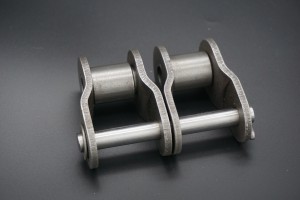Roller chains play a vital role in the efficient transmission of power in various industries. These chains consist of interconnected roller links that allow for smooth movement and provide flexibility to the machine. In roller chains, the form and design of the roller link joints is critical to its overall performance. In this blog, we will explore the different forms of roller link joints and what they mean in ensuring the reliability and durability of roller chains.
1. Standard Roller Rod Joint:
The most common form of roller link joint in roller chains is the standard roller link. It consists of two sets of symmetrically placed pins that hold the inner plate and roller links together. This design ensures smooth rotation and enables lateral movement of the rollers. Additionally, standard roller link joints provide flexibility, which is critical to accommodate changes in chain length during operation.
2. Block connector:
Block joints, also known as solid or solid rod joints, are relatively uncommon but can be found in some heavy duty roller chain applications, such as conveyors and elevators. Unlike standard roller link joints, block joints use solid rods inserted into the inner plates to connect the roller links. This design prevents any lateral movement of the rollers and provides extra strength and stability to the roller chain. Block joint roller chains are highly wear resistant, making them ideal for harsh environments.
3. Riveting:
Riveted joints are widely recognized for their ability to withstand high loads and pressures. This type of joint utilizes rivets to connect the inner plate to the roller link. Riveted joints are often used in heavy-duty applications where roller chains are subject to significant stress, such as mining and construction equipment. Although these joints have excellent strength, they do not allow disassembly or adjustment.
4. Cotter pin connector:
Cotter pin joints, also known as split joints, are often used on smaller roller chains, such as those found in bicycles or motorcycles. The joint consists of a cotter pin that fits into a hole at the end of the pin, holding it in place. Cotter pin joints are known for their ease of assembly and disassembly, allowing for easy maintenance and chain length adjustments. However, they may not offer the same level of durability as other joint forms.
Roller chains are vital components in a variety of mechanical and industrial applications. The form and design of the inner roller link joints of these chains significantly affects their performance, reliability and durability. From standard roller link joints to block and riveted joints, each style offers unique advantages and suits specific applications. Understanding these different forms of roller link joints enhances our understanding of the complex mechanics behind roller chains, allowing us to make informed decisions when selecting the most suitable type for a given application.
Post time: Aug-18-2023

